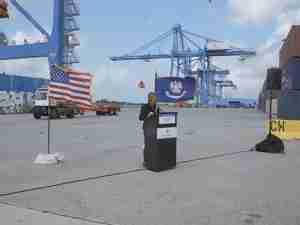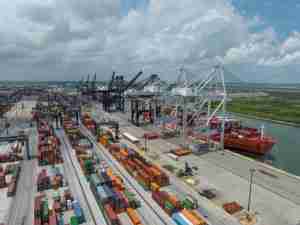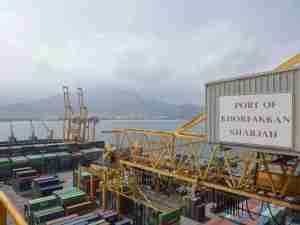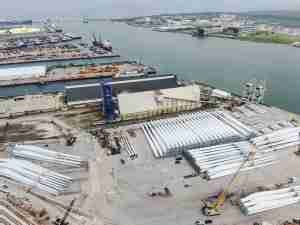Traders predicted the storm, coupled with weather-related delays in Brazil this week, could support iron ore prices, which have been flat over the past two days.
But any material spike is unlikely given the thinner appetite in China at the moment for imported ore as steel production slows, they said.
"We're certainly feeling the brunt of Cyclone Heidi as she crosses the coast," Kelly Howlett, mayor of the town of Port Hedland, told local media.
Port Hedland, the region's largest iron ore terminal, exporting around 240 million tonnes of the steel-making commodity a year, has been closed until the storm weakens, which meteorologists say was occurring quickly as passes over land.
"We are still closed," said Port Hedland Port Authority spokesman Steed Farrell. "It's not possible at this stage to say when we will be able to go in an assess any damage and start to reopen," he said.
Australia's second- and third-biggest iron ore miners, BHP Billiton and Fortescue Metals Group, both export through Port Hedland.
Shipping officials in Port Hedland, which bore the brunt of the cyclone, were not immediately available for comment.
Port Hedland handled a record 60.9 million tonnes of iron ore in the last quarter, the bulk of which was shipped to China. In the month of December alone, 16.6 million of the 21.4 million tonnes shipped was bound for China.
Winds Up to 120 KM/HR
Heidi made landfall around 4.30 am local time (2030 GMT on Wednesday), according to the Australian Bureau of Meteorology.
The bureau said winds of up to 120 km per hour had been whipping along the coast overnight, warning gusts of up to 150 km per hour were possible.
Up to 250 millimetres (9.8 inches) of rain was also possible across central and eastern parts of the Pilbara iron belt, where most of Australia's iron ore mining occurs, it said.
A dangerous storm tide was also predicted for coastal areas and residents near the coast were warned to seek emergency shelter further inland.
Ports serving the enormous iron ore mines of northwest Australia began closing on Tuesday night as the storm swept across the Indian Ocean toward a stretch of coast where nearly two-thirds of the world's seaborne-traded iron ore is shipped.
Australia's biggest iron ore miner and the world's second-largest, Rio Tinto, also halted all loading at Dampier and Cape Lambert ports, 250 km south of Port Hedland.
Rio Tinto ships around 225 millions tonnes a year from these two ports.
Dampier was reopened after 24 hours, with no reports of damage and Cape Lambert was expects to also resume operating on Thursday.
"We fortunately did not receive any weather of note and reopened the port this morning," Paul Toussaint-Jackson, chief operating officer for Dampier Port Authority told Reuters by telephone.
Fortescue exports about 55 million tonnes a year and BHP Billiton ships around 155 million tonnes from the Pilbara, which employs around 40,000 in the mining industry.
Australia's largest oil and gas firm, Woodside Petroleum , also took precautions against the storm by shutting production from several offshore fields.
Brazilian Iron Ore Operations Hit by Rain
Heidi is rated a category two cyclone, the second lowest ranking on a scale of one to five and meteorologists expect Heidi to start to weaken over the next few hours as more of the storm crosses land.
Tropical cyclones and temporary shutdowns are a normal part of Australian summers, but an especially stormy season can have major impacts, such as when cyclones and flooding swamped the coal-mining industry in the country's northeast a year ago.
The bureau warned in October the northwestern region was facing a 65 percent chance of being hit by more than seven cyclones during the November to April tropical storm season.
Vale of Brazil estimate










